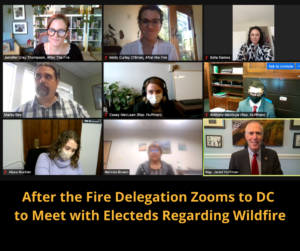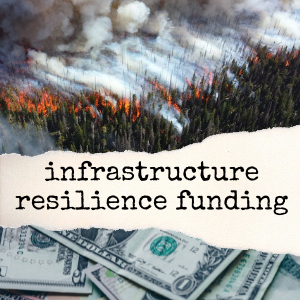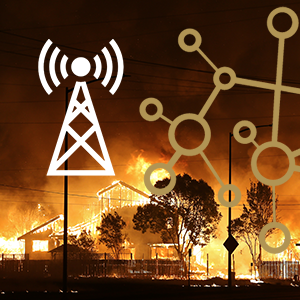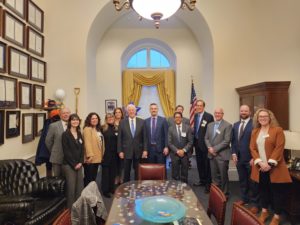
Delegation with Rep. Mike Thompson (D-4 Napa), Washington DC, Feb, 2023
We Go Together: Creating Change in Washington DC
The reality is that 85-90 percent of the federal disaster system is set up for wind + rain events not wildfires and certainly not megafires.
As survivors, it is imperative we show up in person to Washington DC to help federal lawmakers and agencies understand the complexities of recovery and resiliency from megafires.
We lead this effort through collaboration with experience lawmakers, creating delegations of wildfire leaders, and by amplifying good policies that best serve the needs of our communities.
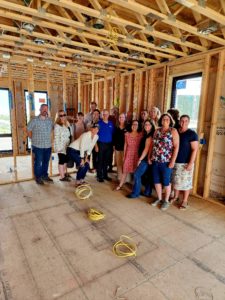
Boulder County, Colorado Marshall Fire Deployment #3 in July 2023
Pay it Forward: Where Advocacy Meets Education
When wildfire strikes a community, they are never prepared. It is the unimaginable brought to life, often in horrific ways that completely upend the lives of every community member, disrupt economies, fracture mental health, and leave the landscape scarred.
But megafires also reveal incredible people who step up to perform amazing acts of service in and for the betterment of everyone affected. Human kindness is the river that runs through every disaster.
We Advocate + Educate so that newly wildfire affected communities do not have to reinvent every corner of recovery. We share lessons, adaptable tools, and a wide network of experienced leaders -- we mournfully add these communities to our terrible club full of wonderful survivors. We walk through it together. And then we ask survivors to come with us to the next state, the next town, the next neighbor who has lost everything.
We educate as we learn.
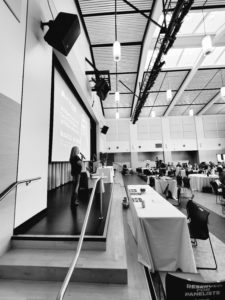
Margot Robbins of CTREX address the 2022 Wildfire Leadership Summit
Education: Speak So You Can Be Heard
After the Fire USA is known nationally for our mission to raise awareness, understanding, and engagement of megafires. We regularly speak at national conferences, on webinars, and 1:1 with leaders in the public, private, and nonprofit sectors.
Even 6-8 years into the Era of Megafires, it remains a fact that showcasing wildfires is relatively rare at the national level, outside of fire science conferences.
We show up to strengthen the disaster professional's commitment to learning and serving in wildfire. We lean in when we are asked to help long-time professionals understand better. We believe "I don't know" is a super-power phrase and we are here to educate and learn together.
Wildfire is a different type of disaster in many ways, but the most important way is it can be solved. We can live alongside of wildfire and ensure megafires are rare. A critical part of this truth is to help people better udnerstand the cause, effect, and opportunities inside of this devastating disaster.
Cross-Pollinate: Lose Your Silos
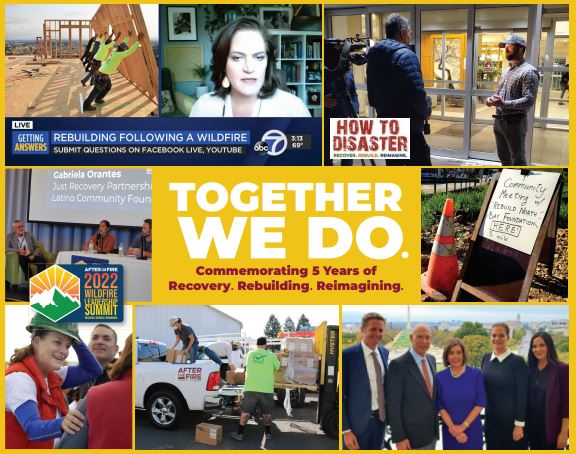
Five Year Round Up of After the Fire on the 5th Anniversary of the North Bay Complex Fires (2017)
We are the foremost nonprofit organization in the country when it comes to all-things wildfire.
Our network is unparalleled in wildfire because we believe a 360-degree view is the only way forward out of the Era of Megafires.
We share our contacts, our ideas, our platform, and out network to encourage and engender collaborative models of disaster preparedness, response, and recovery.
We respect a lane, but do not hesitate to bring people into a room for an experience that will leave them more knowledgeable, more passionate, more determined about how to respond to the crisis before us. This is not the time to close ranks; we must listen and learn together because this is the most challenging problem of our lifetime: tackling climate based disasters.
TOGETHER WE DO.
Want more information on our Advocacy Program?
We are transparent and committed to supporting wildfire communities as we pay our lessons forward. Our Advocacy comprises less than 20% of our overall impact and activities, adhering to IRS Law on nonprofit lobbying. If you have a question or concern, please let us know
Newsfeed
After the Fire Delegation Zooms to DC to Meet with Electeds Regarding Wildfire
During the fall of 2021, After the Fire hosted an ongoing virtual advocacy delegation of local elected officials, non-profit leaders, and community members to meet…
Read MoreBudgets are a Statement of Values: How does the Infrastructure Investment and Jobs Act Value Wildfire Mitigation and Resilience?
On August 10th, the Senate passed, by a vote of 69-30, the Infrastructure Investment and Jobs Act (IIJA). The infrastructure package was the product of President Biden’s Bipartisan Infrastructure Framework…
Read MoreDisconnected: Understanding Communication System Failures During Disasters
By Scott Adams In our technology-dependent world, communications systems are our lifelines. We count on them for situational awareness, emergency alerts and warnings, disaster response,…
Read More
